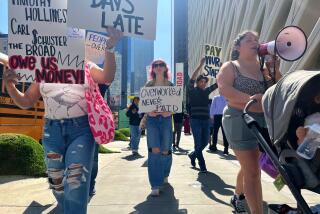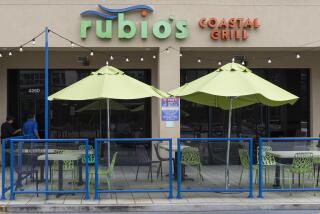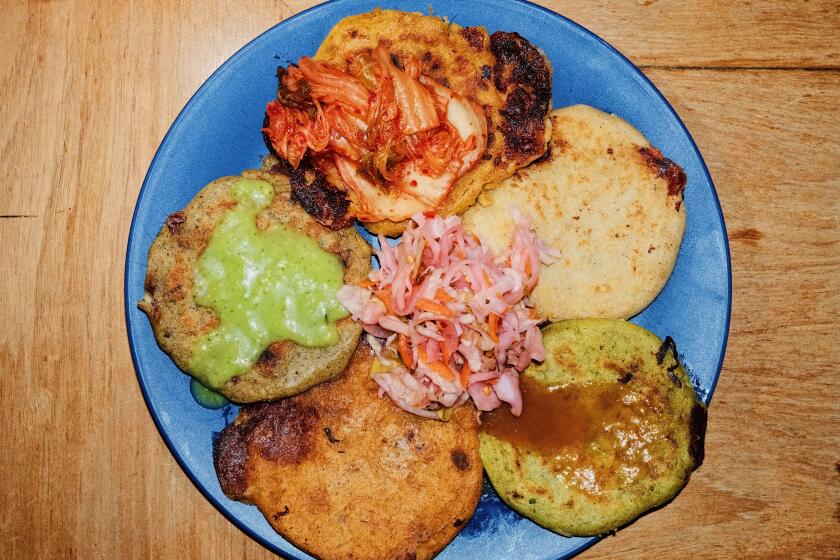Superstorm Sandy left a menu of misery at many New York restaurants
NEW YORK — A few hours before Superstorm Sandy struck two weeks ago, Stefano Barbagallo locked up Barbarini, the red-brick cafe he co-owns in Lower Manhattan’s South Street Seaport.
By the time he returned, the place was finished. Floodwaters had reached to nearly 6 feet, wiping clear the chalkboard that marked the specials. A refrigerator had floated down the block. Tens of thousands of dollars in inventory — meats, cheeses, wines and olive oil — were destroyed. Seven years of work and an investment of $1 million seemed to have vanished.
As he and his wife picked through the damp, chilly wreckage last week, Barbagallo, 49, faced a litany of questions: Was anything salvageable? Would they ever reopen? What would happen to their three young children, not to mention their 25 employees?
“We’re pretty much screwed,” he said, glumly wiping grime from bottles of balsamic vinegar.
New York may be renowned for its food, but even in good times the city’s restaurant industry is a cutthroat world with profit margins often thinner than pieces of a finely sliced Italian ham. After Sandy, restaurant owners are fighting to recover, and the legions of busboys, dishwashers, servers and other hourly workers are struggling after going a week or longer without wages.
The losses don’t compare to the devastation in Staten Island or the New Jersey shore, where dozens were killed and entire neighborhoods wiped out. But to the 300,000 people employed in restaurants in the New York City area, Sandy continues to be a disaster.
Many establishments, particularly around Manhattan’s historic South Street Seaport and the seafront communities of the Rockaways and Brooklyn’s Red Hook, were flooded, forcing owners to decide how or whether to rebuild. Others sustained infrastructure or electrical damage that could keep them from reopening for weeks or months.
“Restaurants that were closed for a week or more have no way to recoup those losses,” said Amanda Kludt, the New York-based editorial director at Eater, a national chain of food blogs. “Some restaurants that haven’t reopened yet, I could foresee them not reopening. There are some that are going to slowly die because they can’t get the funds together.”
Ashley Smith, a 24-year-old waitress from Kentucky, said that many of her friends in the business would have trouble paying rent this month. When Paprika, the East Village restaurant where she works, closed because of the post-Sandy power outage, she lost a week’s wages — about $300.
On a recent afternoon, she was recovering from a cold but asked the owner whether she could come in anyway.
“I’m still sick,” she said, “but I really need to work.”
In some neighborhoods, business is slowly coming back, helped along by social media campaigns. One website called Eat Down, Tip Up urges diners to leave generous tips at downtown restaurants.
The campaigns mainly seem to target Lower Manhattan’s better-known establishments. Some industry watchers say that the efforts could smack of elitism at a time of so much suffering in the city’s outer boroughs.
“Saving restaurants is important, but it’s less important than the other needs,” said Robert Sietsema, food critic at the Village Voice. “Although it’s nice to see people coming together, let’s be honest — New Yorkers don’t need to be talked into going out to eat more often.”
At Barbarini, a sky-lit cafe that was part of a renaissance in the once-derelict seaport, recovery will prove much more difficult. On their cobblestone block alone, Barbagallo says, 300 food service jobs were lost.
Barbagallo and his partner, Claudio Marini, say their insurance company has told them none of their losses are covered. Specialty appliances, including a $35,000 refrigerated display case imported from Italy, have been destroyed.
At a neighborhood market over the weekend, they hawked what was left of their inventory — a few dozen bottles of wine, olive oil and other goods, hoping to raise a couple of thousand dollars to pay off one or two outstanding bills.
“The restaurant is closed but the bills keep coming,” Barbagallo’s wife, Adriana Luque, said as a postal worker dropped a bundle of mail in their gutted storefront.
Their landlord says that they’ll be able to return to the space in six months, but the Barbagallos have no idea when or whether they’ll be able to reopen. They plan to dip into their savings to make ends meet.
“I would love to rebuild this place, but not with my money,” Barbagallo said. “Because I don’t have any.”
More to Read
Eat your way across L.A.
Get our weekly Tasting Notes newsletter for reviews, news and more.
You may occasionally receive promotional content from the Los Angeles Times.











